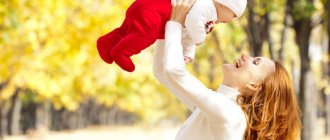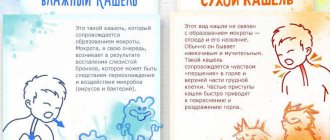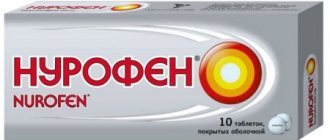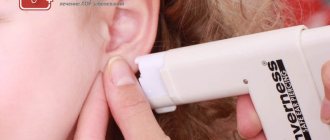At first glance, it may seem that a newborn baby does not need walks. After all, he sleeps safely most of the day, waking up only if he gets hungry or feels anxious about something. Is it really?
The first walks with a baby can be a serious challenge for parents.
Skills of a child at 3 months
In the first year of their life, babies grow and develop very quickly. Every day, week, month, a huge number of changes occur before your eyes.
Baby
- By 3 months, the baby’s weight approaches 7 kg. Their average height is 62 cm. By this time, the baby’s period of wakefulness has increased.
- He begins to react with interest to the world around him. An older child communicates with you using a smile and various sounds.
- At 3 months, the baby's muscle tone decreases. He holds his head more confidently and leans on his arms. Becomes more dynamic. Rolls over and lies confidently on his stomach.
- The intervals between feedings became longer and more constant.
- Over the course of 3 months, you and your baby develop a certain sequence of actions. After analyzing your child’s characteristics, you can easily build or adjust a regime that is convenient for your baby.
Walking with a child in summer
For summer babies, getting to know the world around them is much easier than for those born at other times of the year. On a warm summer day, the weather literally requires you to stay outside with your baby longer. The key here is moderation. Even under the most ideal weather conditions, time spent outdoors should begin with a few minutes, gradually increasing to the usual period (2-3 hours a day).
It is important to choose the right hours for your walk: it would be optimal to walk with your baby twice a day, in the morning between 8-00 and 10-00, and in the evening from about 18-00 to 21-00. During these hours the sun loses its aggressiveness, and the air temperature becomes comfortable.
It is important to dress your little one correctly. Choose the most natural fabrics, light colors and a minimum of accessories. If for the cold season a moderate content of synthetic fibers in outerwear will give it additional thermal characteristics, then for the summer - the main quality is the moisture and air conductivity of the material, the ability to help regulate body temperature.
For older children who sit independently in a stroller, a sun cap or bonnet is required. Buy sunscreen. The main thing is to choose the highest quality children's cosmetics, but not “adult” cream.
When preparing for a walk, you also need to prepare the things you need for each day along the way. Every mother has in her stroller:
- spare diapers 2-3 pieces
- set of clothes
- dry and wet wipes
- light blanket or blanket
- raincoat
- bottle of water (for warmer months)
- container with spare pacifier
Gradually, taking into account the stages of the child’s growing up, this set is supplemented with various rattle toys and replaceable bibs (many mothers cope with increased salivation during teething in this way).
When your baby is old enough to explore the road on his own, pack a small first aid kit with you: a band-aid, an antiseptic (you can buy a universal antiseptic cream, or you can get by with regular peroxide). Mom must be prepared for any situation and have everything she needs at her disposal.
Separately, I would like to say about the role of disposable diapers; no one argues, this thing is very convenient for both the baby and the mother. But if the air temperature reaches high levels, a “greenhouse effect” can form inside the diaper, which is fraught with irritation and rashes on the skin, as well as many other gynecological and urological problems.
Therefore, in summer, the best option would be regular knitted rompers or cotton panties. For long walks, you can purchase reusable cloth diapers, the range of which has increased significantly recently and no longer resembles the design of the old gauze pads from the time of our parents. According to the standards and advice from various children's forums, it is quite possible to sew such diapers yourself, even with a minimum of tailoring skills.
Summer is the time for hardening and maximum exposure to the fresh air. You have an ideal chance to gradually harden your child.
Why does a 3 month old need a regimen?
When a child begins to grow up, every mother thinks about her baby’s routine. Sleeping and waking time, eating and walking time, bathing time - all this must be brought into order and sequence.
- Your task is to properly organize your child’s time during the day. correct physical and emotional development depends on this . If the baby is malnourished or lacks sleep, then there can be no talk of a good mood.
- The daily routine will give the mother the opportunity to plan her day . With an established routine, the baby will develop more correctly and harmoniously. Learn to perceive information from the outside world faster and more correctly. The phasing of your actions will give the baby a certain biological rhythm and relieve him of unnecessary worries.
- The chart will help you better understand the reason for your baby's crying . Without a clear routine, active children quickly become nervous. A consistently repeating chain of actions will give the child a feeling of harmony and stability. As the baby grows, the schedule needs to be adjusted.
Baby's routine at 3 months
IMPORTANT: All children are initially predisposed to order. The task of parents is to form a useful educational habit that will accompany the child throughout the rest of his life.
Typical problems that parents face in the absence of a routine are lack of appetite and frequent tantrums. A planned day and regular meals have a positive effect on the child’s mental state and behavior.
Walking with a child in winter
The most pressing issue is walking with a child in winter. Is it really necessary to expose both yourself and your child to the risk of getting sick by scrupulously adhering to pediatricians’ recommendations about daily walks? It all depends on several factors: weather conditions, the age of the child, the location of the walk, and the child’s well-being.
Weather
The most important indicator. The duration in particular, and the validity in general, of the child’s and mother’s outdoor time in winter depends on it. If the weather is sunny, windless, without severe frost and snowfall, it is not only possible to go for a walk, but even necessary with a child of any age! The main thing is to choose the right clothes or blanket (blanket) for the little ones, make sure the stroller cover is protected from the wind and choose the right time for optimal sleep.
According to the pediatrician’s advice, you can walk up to -15 ºС inclusive. But mothers rarely risk going out when the thermometer is at this level. An ideal alternative would be a “walk” on the balcony or near the entrance (in a private house, the best option is to go out into the yard). It would also be useful to take care of regular ventilation of the room, otherwise the portion of fresh air, even during a long walk, will not be enough.
Child's age
If your child was born in winter, you need to gradually increase the walking time, starting from 10-15 minutes a day, ending with a full two-hour walk. The individual characteristics of the children will also be important: some babies behave well in a stroller, others cannot lie quietly for half an hour, which requires a corresponding adjustment of the duration of walks. As a rule, most parents, after a month of “getting to know” their child, can say exactly how the child tolerates daily exercise and what is its optimal duration.
Place of walk
Not everyone, unfortunately, can boast of living in an ecologically clean area, close to a forest or park. You can often see mothers with strollers near a busy road, but the benefits of such a “health” walk are very doubtful. It is advisable to choose the cleanest and safest place possible for such purposes. Even a couple of hours a day in the yard, away from traffic and smoke, can provide the child with useful oxygen, albeit in smaller quantities.
Child's well-being
Focus on the child's health. If the main signs of the disease are present, it would be a bad decision to go outside in any weather; it is better to sit at home for a day or two, limiting yourself to regular ventilation.
Other factors
In winter, you should also take into account possible temperature differences between the street and the premises. The life of a young mother, in addition to caring for the child, also includes inevitable household chores, so almost all mothers combine daily walks with equally regular shopping. At the same time, you cannot leave a stroller with a child on the street, and in winter the temperature in stores is significantly higher than outside, which cannot have a favorable effect on the baby. A baby who sweats in the store is at risk of catching a cold.
Features of a child's regime at 3 months
For each child at 3 months, the daily routine should be built individually.
- To give your baby a clearer understanding of daytime and nighttime, carry out daily procedures such as washing in the morning and bathing before bed.
- Don’t be lazy to wash your baby with running water every time you change a diaper - this will save him from discomfort and unwanted rashes.
- Try not to let weather conditions affect the quantity and quality of your walks outside.
- Build time into your schedule to play with your child . Spending active time with your baby will have a positive effect on his motor and tactile abilities. Changes in the visual and auditory functions of the body will become more noticeable.
- Set an individual feeding schedule; the quantity and quality of sleep directly depends on this.
The routine is also important for mom.
Set aside a small amount of time for gymnastics every day. Simple exercises and mother's touch will contribute to the healthy growth and development of the child.
Walking with a 3 month old baby
Walking outside will give you the opportunity to unwind and change your surroundings. While walking, talk with your baby about what is happening around. Being in a horizontal position, the baby will be interested in watching the flight of birds, catching the sounds of the bustle of the street, and contemplating the movement of foliage on the trees. Hang a bright pendant in the stroller. The baby will learn to focus his gaze on a moving object.
Walks
- Combine one of the walks with your baby's nap. This will allow you to relax without being distracted by routine household chores.
- In the summer, ensure that the child's body is exposed to sunlight - this will help the body produce vitamin D. In winter, at temperatures below 10°C, walks outside should be no more than an hour.
Walking in the fresh air will be your assistant in properly building your child’s daytime sleep. If you are unable to put your child to sleep at home, he will fall asleep much faster outside. Fresh air will make you sleep longer and more soundly.
Baby's nutrition at 3 months
Timely and nutritious nutrition by 3 months of life is the most important thing a fast-growing baby needs. At the age of three months, a certain interval is developed between feedings. Feeding too frequently can cause your baby to overeat.
Excessive feeding will add extra weight to the baby and can cause allergies. Insufficient time to digest food leads to tummy problems and irregular bowel movements. It is not recommended to feed your baby on demand; this will limit your freedom of action.
The most important
- At the age of 3 months, breast milk is the best nutrition for the baby. The composition of nutrients in mother's milk is most adapted to the needs of the baby. This food is easy to digest.
- After each feeding, the baby must be held in a horizontal position for several minutes to regurgitate air and excess fluid.
- For breastfed babies, the daily milk intake is 800-900 ml. This is approximately 6-7 feedings during the day. In this case, you need to indicate a time for snacks in your schedule.
- For bottle-fed babies, the intervals between meals are longer, since the formula takes longer to digest and absorb milk. The daily number of formula feedings should be 4-5 times with an interval of 3-4 hours.
The interval between night feedings should be 5-6 hours.
Games with a 3 month old baby
At 3 months, the child actively moves his arms and legs. Attach a mobile or pendant with rotating and sounding rattles to the baby's bed. When in contact with them, the baby uses his physical capabilities. Help him reach or kick objects.
Use mobile
- Sing to your child more often. The baby will pick up the volume and intonation of your singing. Sing from a distance and up close. Your voice will calm the baby and bring him joy.
- If you have pets, give your child the opportunity to watch them.
- Carry your baby in your arms while exploring objects in the room. In a vertical position, everything around him will appear in a different light.
- When your child spends time alone in the crib, turn on background music. The baby will learn to distinguish the tempo and volume of melodies.
- Teach your 3-month-old child about different animals, making different sounds. The child will carefully observe your facial expressions and begin to distinguish the manner of pronunciation.
- Bring various toys closer and further away from the baby, this will coordinate eye movements and make the child want to get closer to the object.
- Place rattles in your baby's hand. Each time he will hold the toy more confidently and begin to do various manipulations with it.
Using various materials, construct toys for your baby's tactile play.
Walk and illness
When a child under one year old gets sick, the mother is faced with the question of whether it is possible to go outside with him and in what weather. You cannot walk during the acute stage of an infectious disease, which is accompanied by pain, high fever, cough, and severe runny nose.
High body temperature can cause skin blood vessels to suddenly constrict when exposed to cold air, reducing heat loss. As a result, the temperature of the internal organs increases, and this is very harmful for the body of a child under one year old.
You can go for a walk if the body temperature does not exceed 37.5 degrees, the child is active and eats well. Fresh air in this case will only speed up recovery, especially if the organs of the respiratory system are affected. Before leaving, you need to clear the nasal cavity of accumulated mucus or crusts. This will ensure air flows through the nose. The air will be warmed, moistened and purified.
The duration of a walk during illness with infants should not exceed 20 minutes a day. It is advisable not to go far from home. If the baby feels worse, immediately bring him home.
You need to walk with your baby every day, regardless of the time of year. If after a walk the baby is cheerful, his back is dry, his hands are warm, it means that the clothes were chosen correctly, and the time spent in the fresh air was beneficial.
Baby's daily routine at 3 months: table
Let's describe the most common schedule for a 3-month-old baby:
| Time | Procedure |
| 6.00 | Morning awakening |
| 6.00-8.00 | Hygiene procedures, morning massage, joint games |
| 8.00-9.00 | Morning dream |
| 9.00-9.30 | Breakfast |
| 9.30-11.00 | Morning walk |
| 11.00-13.00 | Daytime nap |
| 13.00-13.30 | Dinner |
| 13.30-15.00 | Day walk, games |
| 15.00-16.00 | Third dream |
| 16.00-16.30 | Afternoon snack |
| 16.30-18.00 | Spending time together |
| 18.00-19.00 | Evening sleep |
| 19.00-20.30 | Dinner, games |
| 20.30-21.30 | Bathing, hygiene procedures |
| 21.30-22.00 | Night sleep |
- Any feeding must be shifted if the baby is sleeping. This suggests that he is not hungry.
- Do not rush to wake up your baby if he wakes up earlier than expected. Make an effort to continue his sleep.
- Do not take your baby out for a walk immediately after waking up. Give him time to cool down and finally wake up.
Each mother should adjust the schedule based on the characteristics of her baby. You should not force your child to adhere to strict clock rules.
Walking with a baby in the fall: how long to walk, where and how
Several days have passed since the maternity hospital, and the happy mother, along with a series of new joyful worries, acquires another no less pleasant one - daily walks with the baby. And if it’s autumn outside, and the weather changes very quickly, rain replaces the sun, a strong wind suddenly rises, what should you do? Or is it your first child and no experience at all?
The blog “The World Through the Eyes of a Mother” offers some tips on how to prepare for a walk with your baby in the fall: how to dress your baby for a walk, how long to walk with your child in the fall, how to properly solve some problems that arise.
Getting ready for a walk
Walking time or when and how long can you walk?
Starting from the birth of a child, you need to gradually accustom him to walks in the fresh air . The first ones should last 5-10 minutes and gradually increase to 2 hours. The average walking time for breastfed babies, provided they are awake, is at least 40-60 minutes.
Quiet, good weather is most suitable for walking with a child. If there is a strong gusty wind outside or the temperature is below -15? C, it's better to stay at home.
When choosing a place to walk with your child , you can give preference to parks, squares, quiet, deserted corners. Spaces that are too noisy and crowded - markets, squares, streets near highways - are not the best place for a baby.
It is not necessary to “run circles” around the park while walking. If the baby falls asleep in the stroller, the mother can calmly sit on a bench and read a book.
If a young mother is tired or there is a lot of work to do at home, then there is nothing wrong with the baby spending one nap on the balcony (provided that the windows do not face a noisy street with heavy traffic).
If the family lives in their own house with a courtyard, then a walk in the fall and at any other time of the year will consist of a child sleeping in a stroller. For control, you can use a baby monitor, then the baby will be outside, and the mother will be at home minding her own business.
If your baby is sick (runny nose, cold without high fever), this is not a reason to refuse a daily walk. Clean, moist air will ease the baby's condition. For walks, you should choose quiet, deserted places - parks, squares.
What's better to wear for a walk? Advantages and disadvantages of strollers and slings for walking
Walking in a stroller:
– buying one, and often several strollers, requires quite a lot of expenses on the part of parents; it’s easier if the stroller was “inherited” from another child;
– the stroller better protects the child during sudden changes in weather, rain or wind;
– when the child sleeps in the stroller, the mother can easily do any of her business or relax;
- surrounding people, motorists, seeing a mother with a stroller, are more careful than when the child is in a sling (they may simply not notice him).
Walking in a sling (or ergonomic backpack
Loading... ):
– always hands free or one hand;
– you can move freely, which is not so easy to do if the child is in a stroller, because any staircase or door immediately becomes a significant obstacle;
– some load on the back (the child is growing, and his weight is constantly increasing);
– you can easily change the position of the child.
These are just some of the pros and cons of strollers and slings . Each mother can choose any of these items at her own discretion; the ideal option would be to have both.
And then it will be possible to use a sling for short walks, and a stroller for longer walks of several hours.
What to take with you for a walk with your child in the fall?
When going for a walk, you need to take with you:
– a standard set of items for a baby : diapers, wet wipes, a pacifier (you can tie it to a ribbon or use a special chain with a fastener and a container for the pacifier, so it definitely won’t end up somewhere in the dirt or a puddle), a toy and other necessary things;
– a special rain cover for the stroller , because autumn is the time of rain;
– an additional blanket or blanket (especially in early autumn, when the weather is changeable);
– children's thermos for bottles. It will reliably keep warm and help the mother out at the right moment (if the baby bursts into tears and wants to eat or drink). For breastfed children, there may be warm tea in the bottle, for bottle-fed children - a mixture.
How to properly dress your baby for a walk in the fall
In the autumn, to pack your baby for a walk depending on the weather. Wrapping your child up tightly is not the best option; he will feel hot and uncomfortable. You can dress your baby the same way you dress yourself, and add another thing, for example, a bodysuit, a wool suit, or a blanket.
Or dressing your baby is a little easier when using a sling. Especially if you plan to wear the sling under your mother’s clothes (for example, a sling jacket).
It’s very simple to check if the baby is cold; you just need to touch his neck; if it’s warm, that means the baby is warm.
Walk
What to do with your child on a walk?
If the child does not sleep, you can spend time usefully during a walk and develop the baby:
– if the baby is no more than 2-3 months old, you can simply talk about everything that is around;
– the older baby can now be allowed to touch different surfaces: bright autumn leaves, acorns, tree bark;
– explain the name of this or that object, animal, what sounds it makes;
- listen to different sounds.
How to deal with small troubles while walking?
In the first months after birth, the baby requires special attention; he needs fairly frequent feedings, and the baby’s intestines empty on average 1-7 times a day.
The baby wanted to eat while walking:
– if the baby is in a sling, you can put him to the breast quite unnoticed from others. In principle, if you have comfortable nursing clothes or the baby is crying a lot, you can feed the baby in any place where you can sit down. Smart people will not pay attention to a nursing mother, and personal embarrassment will remain in second place after the desire to calm the whim;
– a children’s thermos with a bottle, which you thoughtfully took with you, will help; sweet tea will quench your thirst and calm your appetite for a while, during which you can return home;
- go home and feed the baby there.
To reduce the possibility of this situation occurring, it is better to go for a walk immediately after feeding, or shorten its time.
What should you do if while out for a walk and you need to change the diaper?
Most babies do not like to walk around in a dirty diaper; they begin to be capricious and cry. In autumn, the temperature outside can be quite low and changing a diaper right in the stroller is not always possible. There are several ways out of this situation:
– Are there large stores or shopping centers nearby? Great! Entering them, you can find a “mother and child” room equipped, or toilets equipped with a changing table. In any case, even a bench with a sink in the restroom will do;
– if there is a clinic or hospital nearby, then you can run there;
– if there is no suitable place nearby to change the baby, you can finish the walk and go home.
Returning home from a walk with the baby
Before entering the house, you need to clean the wheels of the stroller from dirt and leaves. You can rinse them with water from a previously prepared bottle that you take with you, or use napkins or special covers for wheels.
At home, you need to remove dirty diapers, wipes and other unnecessary used items from your bag, this will save time before your next walk.
Autumn is a great time for a walk with a child , the bright colors of the leaves will attract the baby, fresh air will help him be healthy, and even minor troubles, rain or wind, will not interfere with a prepared mother.
(2,497 total visitors, 1 views today)
Baby's sleep at 3 months
At the age of 3 months, a child's daytime and nighttime sleep takes up to 15 hours a day. Night sleep lasts about 8 hours. The rest of the time is allocated to 4 daytime naps lasting from an hour to two. The quality of your baby's sleep depends on environmental factors.
IMPORTANT: Walking in the fresh air, active pastime, and proper nutrition provide the baby with a long, relaxing rest.
The cause of restless sleep can be natural phenomena to which the baby’s body begins to react at three months. On such nights, allow your child to sleep longer next to you. The baby will feel your warmth and calm down. When for some reason your schedule goes wrong, don’t force your baby. If he doesn’t want to sleep, you won’t force him, you’ll just waste your nerves.
Dream
Extend the period of wakefulness and soon the baby will begin to yawn on his own. It is highly undesirable to put your baby to sleep in your arms or by rocking him to sleep. At the age of 3 months, the baby should get used to falling asleep on his own.
Actions parents can take to improve the quality of their night's sleep:
- Sequence of actions before going to bed. Carry out the same procedures before going to bed and your baby will reflexively understand that night is coming soon.
- Maintaining a comfortable temperature in the room. The air should be fresh and, if necessary, humidified.
- Comfortable sleepwear. Use a sleeping bag or swaddle if necessary.
- Quiet and calm environment in the room. Eliminate all extraneous noise.
- Evening swimming. Do not neglect daily water procedures before bed. Bathing in the bath will allow you to spend the rest of your energy and relax your baby.
Walk in different seasons
When getting your child ready to go outside every day, it is necessary to take into account that the thermoregulation system of a baby up to one year is not fully formed. Therefore, you need to dress it according to the weather. When a baby is too hot, his body cools down through his head, feet, and palms. Therefore they become damp and cold.
When the air temperature outside is from 19 to 25 degrees Celsius, it is enough to put on the baby as much clothes as an adult is wearing. At temperatures below 18 degrees, wear one more clothing than an adult. If it is hot outside, more than 25 degrees, then a child under one year old should wear one less layer of clothing.
Clothing must be made from natural material. It is advisable to opt for cotton clothes. The accessories in the stroller should also be made of the same material: mattress, pillow, blanket. This will allow the skin to breathe and the sweat produced to be absorbed.
In summer, the number and duration of walks every day can be increased. It all depends on the condition of the mother and baby. You should not walk during periods of high sun activity - from 11 a.m. to 3 p.m. In the summer, it is possible to feed your child without going home. Only the mother will need to wear comfortable clothes and take a diaper for this occasion. Don't forget to take some water, especially if the baby is bottle-fed.
In summer, at temperatures above 25 degrees, you can dress your child in light clothes: a dress or T-shirt, rompers, a vest, a cap, and cover with a blanket. At temperatures from 20 to 25 degrees, you need to dress your baby in warmer clothes: a cotton cap, a thin long-sleeved blouse, pants and socks.
If it is hot outside, it is allowed to sunbathe without undressing the child. You just need to do this gradually. First you can open the legs, then the arms, then the chest. You need to start with 1-2 minutes a day. There must be a light cap on your head.
If a child is fed formula for up to one year, there is no need to dilute the formula in advance. In summer it can quickly turn sour. It is better to pour the required amount of the mixture into the bottle, and dilute it with water before feeding outside.
In winter, in good weather, you can walk with a one-month-old baby for up to 2 hours a day. It is advisable to divide it into several 40-minute exits. If the temperature on the thermometer is below 15 degrees, then you cannot walk with a child who is under 3 months old.
In winter, it is best to dress your baby in several layers of clothing: a cotton T-shirt, a wool or flannel jumpsuit, a jumpsuit with natural fur so that the back is closed.
In spring and autumn, you should not walk in windy or rainy weather. With deceptive warmth and cool air, the risk of colds increases. Until 4-5 months, the child will sleep in the stroller during walks. After this time, you should try to take your baby out for walks when he is awake. It was at this time that he began to actively study the world around him.
It is not advisable to walk in the rain with a baby under one year old. Wet air is harmful to the respiratory tract, especially in children under 3 months. It is not recommended to use a raincoat - a greenhouse effect is created inside the stroller, which also does not have the best effect on the baby’s body. A raincoat can be used when the rain takes you by surprise.
Bathing a 3 month old baby
Water procedures have a strengthening effect on the baby’s nervous system. Relieve muscle tension and ensure a good night's sleep. Feeling the massage effect, the baby plunges into a state of comfort. Under the influence of water, the body's metabolism increases, respiratory functions are restored, and blood circulation improves.
Bathing the baby
It is not recommended to swim immediately after eating. It is necessary to maintain an interval of at least half an hour. During water procedures, it is necessary to control the entry of water into the respiratory organs. Water toys will have a beneficial effect on the emotional background of the child. If the child is in a bad mood or is not feeling well, bathing should be postponed. In addition to maintaining hygiene, spending time in water is a hardening event.
What to do if you don't go for a walk?
For a baby in the first month of life, oxygen is sufficient in a frequently ventilated apartment. If you are concerned about humidifying and purifying the air, then the air in the room can be even cleaner than on the city streets. In the cold season - if the child was born in autumn, winter or spring - it is advisable to spend all 40 days of the adaptation period, or newborn period, at home; in the warm season - about 20 days.
Such seclusion will have a beneficial effect on the adaptation of not only the baby, but also the mother. After all, she is also undergoing intensive processes of adaptation to a new role and recovery after childbirth. The mother gets hot and cold, the amount of some hormones decreases and the amount of others increases, the musculoskeletal system returns to its pre-pregnancy state, and the breastfeeding process improves.
Mother and child are very vulnerable at this time; they are sensitive to temperatures, impressions, and stress. In addition, going outside with a newborn is also difficult from an organizational point of view: the baby is often latched to the breast and requires almost constant holding, it is difficult to dress and undress.
So, why is it not recommended to walk with a newborn baby (up to 40 days):
- Adaptation of mother and baby after childbirth: the need for constant contact with each other, the need for complete mental and emotional peace, the absence of unnecessary stimuli and stress.
- Establishing breastfeeding, the baby can be attached to the breast very often and for a long time.
- Undesirability of deep street sleep.
- Air movement during sleep and low temperatures are undesirable - since the breathing processes are still in the stage of development and adaptation.
Gymnastics for a 3 month old baby
If by three months your baby does not show any deviations from the norm, and the neurologist has not prescribed a massage for you, then it is enough to do daily morning exercises. Tactile contact with the baby will have a significant positive effect. Start the exercises with regular stroking and small rubbing.
- The main task of a baby at this age is to learn to roll over from back to stomach. Your goal is to help your child achieve the final result. As soon as you begin to notice the baby's first efforts, help place his arms and legs in the correct position. Perform circular movements of your legs at the hip joint.
Massage and knead
- Don't forget about massaging your arms and legs. Kneading your fingers stimulates the development of fine motor skills. Massage your feet - activate biologically active points. During gymnastics, recite various rhymes. Spread your arms to the sides and cross them over your chest.
- For proper bowel function, bend and press your legs towards your stomach. To eliminate colic, stroke your tummy clockwise. Stroke your back and stretch your buttocks.
- To strengthen the neck muscles, lift the baby by the arms into a semi-sitting position.
Good luck to you in all your endeavors!
Walking with a child in spring and autumn
The most successful period for outdoor recreation with a child is the off-season, during warm and dry weather. Even in autumn there are sometimes surprisingly sunny and warm days. It will be easier for children born in spring or autumn to gradually adapt to the world around them. A daily promenade will help with this.
The recommendations are a lot like walking in winter. Except that the weather means more time spent outdoors. The duration and frequency can be increased, again focusing on weather conditions and the experience of previous walks.
Clothes for mid-season festivities should be appropriate, but for the little ones it is still better to use a blanket or envelope, only less insulated than in winter.
No less important will be the method of transportation; a transformable stroller is ideal; in this type of transport, it is convenient for the baby to sleep and explore the world around him. Many children successfully fall asleep under the gentle rocking motion while moving; some prefer getting to know the area to a restful sleep. Some mothers prefer to walk with the child in a special carrier - a sling, which ensures continued contact between the mother and the child all day long.
To use a baby carrier, you should wait until your child is at least three months old. This movement is not intended for long walks, but is only suitable for short trips.
If you need to stay outside for quite a long time, consider the option of “on-the-go” feeding your baby. For different cases, this is either a bottle with formula or breast milk in a special thermos container, or finding a secluded place for breastfeeding.











